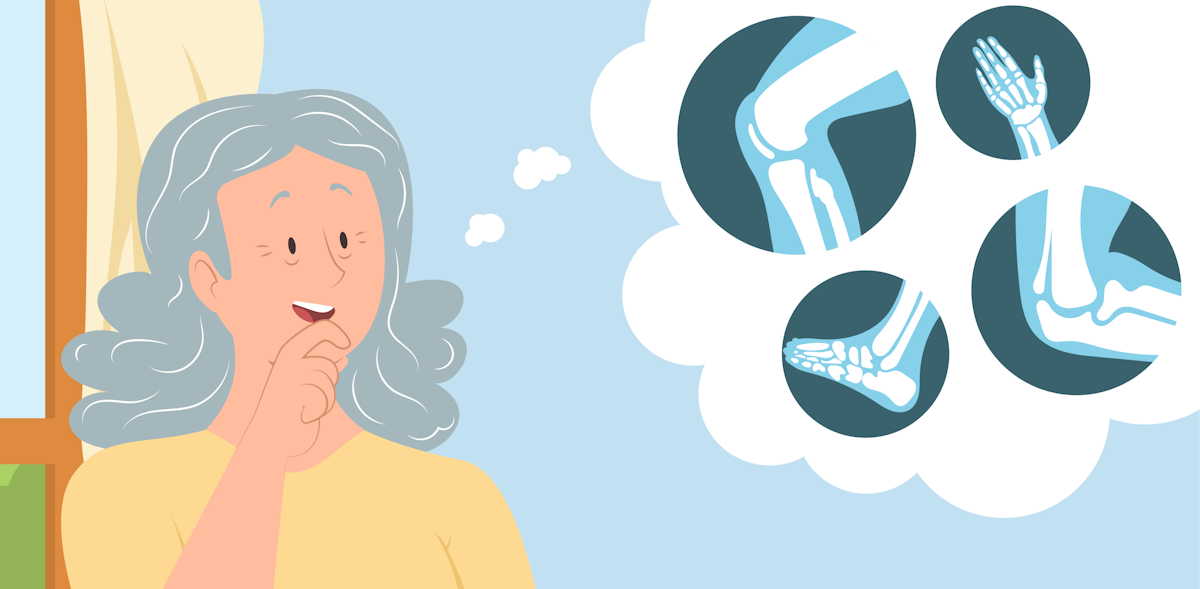Aching Knee Joints? How To Take On Joint Pain In Old Age
Summary
Discover the secrets to gracefully embracing your golden years free from the discomfort of aching knee joints with a proactive approach that includes low-impact exercises, a balanced diet, and collagen supplements.
Table of Contents
Aging is a natural part of life, but that doesn't mean we have to slow down. As we gracefully step into the golden years, we may find ourselves facing a common yet unwelcome companion—joint pain. The knee joints are among the most commonly affected areas of joint pain and this poses a hindrance in the enjoyment of retirement life. Fortunately, there are many ways to ease our burdens and enable us to engage in more activities without the discomfort of aching knee joints.

What Are Joints?
In understanding how to manage aching joints, we must first understand what the joints are. The joints are the connections between two or more bones that ensure smooth, frictionless movement.
They enable us to move our bodies and protect our bones from rubbing against one another and causing wear and tear.
There are many different types of joints such as hinge joints, saddle joints, pivotal joints, condyloid joints, etc. The joint found in the knees is a hinge-type synovial joint. These are joints that mainly allow for flexion and extension; movements that enable a different angling of two bones. The knee joints are one of the largest and most complex joints in the body hence, it is the most commonly affected by joint pain. It is composed of four bones and an extensive network of ligaments and muscles.

What Happens to Our Joints as We Get Older?
Beginning at around the age of 30, our bodies lose bone density and muscle mass. The lubricating fluid needed to decrease and nullify friction on the bones during movements also diminishes alongside the cartilage, a long connective tissue that protects the bones and joints, thereby resulting in stiff joints and decreased mobility.

How Can We Keep Our Joints healthy as We Age?
There are a lot of other factors to consider when thinking about keeping our joints healthy; one of which is staying active.

Exercise
Physical activity does not only help keep the muscles around our joints strong and working, but it also helps reduce the stiffness of the joints themselves.Low-impact exercises are most apt in maintaining a healthy joint, as it puts less strain on the joints and muscles compared to other exercises.
Here are three low-impact exercises that you can start now to maintain your joints’ flexibility:

01. Brisk Walking
Brisk Walking is the most convenient low-exercise impact that you could try. It requires no equipment and can be done anywhere. Plus, it’s a great way to enjoy nature and get some fresh air. It soothes the mind just as well as it does the body and the joints!

02. Swimming
Put your swimming goggles on and take some laps in the pool. You need not do some marathon; just a fun, leisurely swim will do the trick! Water provides enough resistance that helps to reduce the strain experienced by the joints and muscles of the body.
To make it more fun, you could give water aerobics a try and join a class. Being part of a community with shared health and fitness goals is a lot more fun than exercising alone after all.

03. Cycling
Cycling is an excellent way to enhance joint mobility without putting too much strain on them. However, if you do not have the space to go cycling, try some stationary bikes. Stationary bikes are great alternatives to regular bikes as it gives you the physical benefits of cycling without needing to move elsewhere.

Maintaining a Healthy Diet
Your diet also plays a huge role in the health of your joints. Make sure that you have a balanced diet rich in essential nutrients as these provide the building blocks for strong bones and muscles.
Also, keep watch of your weight as it affects the intensity of the strain experienced by your joints when your body is in motion.

Taking Supplements
As we age, our bodies’ natural production of essential nutrients, such as collagen. Taking a collagen drink may help with maintaining the health of our joints amidst this concern.
Recogen is a collagen powder drink enhanced with calcium lactate to help in the regeneration of cartilage and collagen-containing tissues. Just dissolve the powder into 200ml of a cool or warm beverage of choice and it’s ready to drink. Consume it once daily before or after a meal.
Aging does not necessarily mean discomfort in the body. A healthy and balanced lifestyle can make aging a graceful and vibrant experience. Take the lead and start embracing an active, pain-free future! — (Nurturemed)

